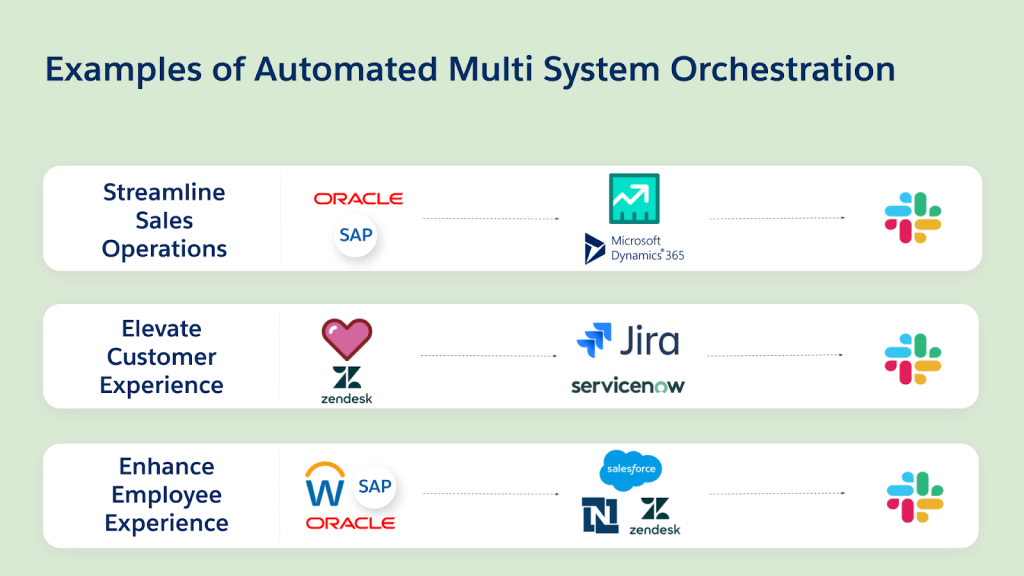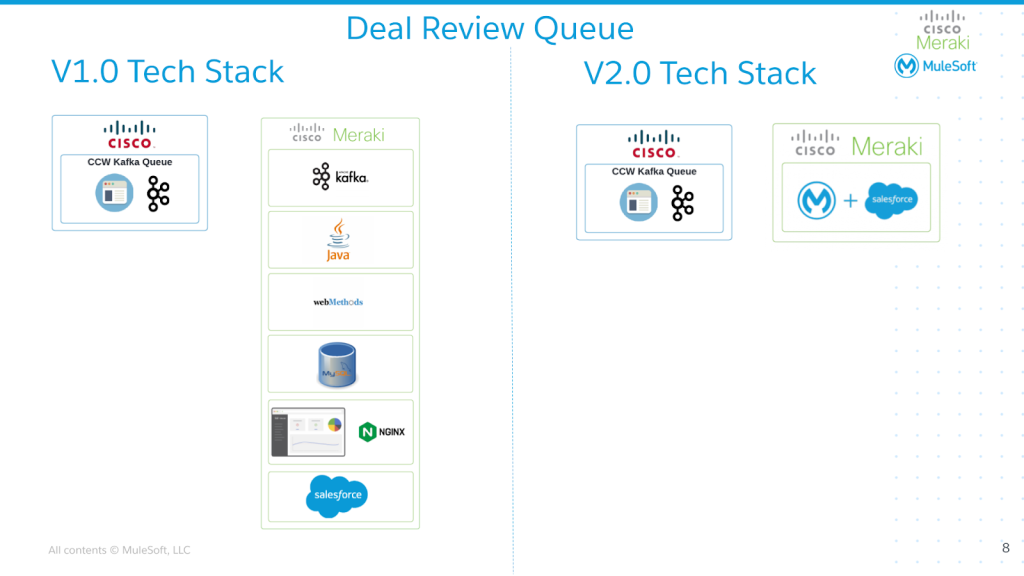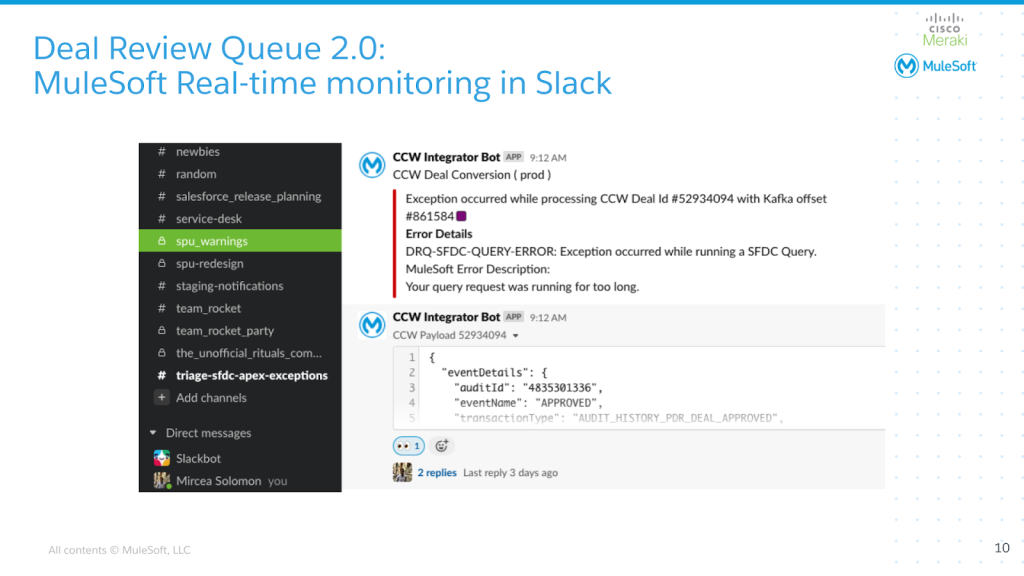CIOs know that there’s no going back to work as we knew it.
In fact, CIOs ranked digital workplace technologies to support work from home as a priority for the year ahead. With this in mind, the pressure is now on central IT to make this digital-first world a reality.
Central IT is being viewed as the driving force behind transforming old business practices in the digital-first world, with business teams asking IT to complete 30% more projects this year. So how can IT work smarter to help deliver digital experiences? The answer is automation.
Enterprises are investing in technologies that enable the automation of repetitive processes to further drive productivity and efficiency. But automating work is harder now because data and systems are becoming ever more fragmented. With the average digital interaction involving almost 40 different systems, data and system silos make automation impossible and create an expectation gap with your employees, customers, and partners.
A secure platform for composability and automation
The average enterprise currently has over 800 individual applications or systems, yet only one third of them are integrated. IT teams need data to deliver new digital-first experiences, but that data could live across a variety of technologies including in Salesforce, third-party systems, in the cloud, on-premise, or even homegrown.
MuleSoft Anypoint Platform is the only unified platform that combines the power of integration, API management, and automation, on a resilient, secure, and governed foundation, so customers, employees, and partners everywhere can benefit from these new digital-first experiences.
Organizations like Cisco Meraki are using the MuleSoft Anypoint Platform to integrate all their data and system silos, transforming themselves into a composable business by taking an API-led approach to integration and becoming more agile and efficient as a result.
In a composable business, siloed data and systems become securely accessible building blocks through APIs and empower everyone to innovate, not just IT. The value of being a composable business goes well beyond integrating silos; composability also makes automation possible.
IT enables end-to-end automation for everyone
IT can use the MuleSoft Slack Connector to integrate all their siloed systems using APIs right into Slack. Teams can take actions like amending sales forecasts, reserving inventory, or updating customer service tickets in any business app directly in Slack by triggering and orchestrating all the systems in a workflow.
This increases productivity across the enterprise by reducing context switching between systems and optimizes the use of the applications and systems that already exist within the organization.
Below are three examples of automated multi-system orchestration use cases across sales, service, and HR teams:

- Streamline sales operations: Ensure sales forecast accuracy by notifying account teams via Slack when actual orders or revenue in systems like Oracle or SAP are less than what’s been forecasted in Salesforce or Microsoft Dynamics.
- Elevate customer experience: Jumpstart case resolution by automatically creating or updating ServiceNow tickets or Jira issues with Salesforce Service Cloud or Zendesk case updates, and notify relevant teams via Slack.
- Enhance employee experience: Automatically sync newly added or updated employee profiles from systems like Salesforce, Netsuite, or Zendesk to HCM systems like Workday, Oracle or SAP SuccessFactors, and automatically notify stakeholders via Slack upon completion.
3 ways process automation adds business value
Let’s discuss three ways that MuleSoft and Slack add business value by automating business processes.
1. Boost employee productivity and efficiency
The unintended costs of multitasking and context switching. This includes:
- A decrease in productivity by 40%
- Increasing the time it takes to complete a task by 25%
- Increase error rates by more than 35%
MuleSoft Anypoint Platform and Slack can reduce the need for employees to context switch between multiple business applications with automated multi-system orchestrations or workflows.
2. Eliminate licensing costs
A critical priority for CIOs is managing and reducing IT costs, which includes license costs. By using MuleSoft Anypoint Platform and Slack to create automated multi-system orchestrated workflows, you reduce the number of users that need access or licenses for core systems that they rarely use.
For example, with a Salesforce and Netsuite integration, a sales rep doesn’t need access to both systems as any updates or changes they make in Salesforce are automatically made in Netsuite. The sales rep can update a Salesforce opportunity to “Closed Won” without leaving Slack. This would then trigger the inventory to be automatically provisioned in a system of record like Oracle or SAP.
Removing these infrequent users also gives IT a clearer view of the adoption and engagement rates of the core systems in its tech stack.
3. Enhance team collaboration
A fully-integrated architecture enables employees to bring context into systems of engagement like Slack, where people are collaborating and working together.
Central IT gives your team access to the information they need to make informed business decisions. Salesforce and Netsuite are not collaboration tools, but when information is extracted from them and shared, business leaders have what they need to make informed decisions.
When users can’t easily find or share information, teams can’t collaborate effectively around this business data, which means organizations don’t realize the full ROI for all of the tools and systems in their ecosystem.
How Cisco Meraki automated sales lead routing
Meraki faced challenges with sales forecasting and pipeline management. When the company was acquired by Cisco in 2012, Cisco customers obtained access to Meraki products, and Meraki sales teams gained a powerful new pipeline for sales opportunities. However, Meraki’s sales operations team faced a new challenge trying to control the increase in sales leads coming from Cisco.
While the company tried to streamline the deal review queue, the solutions involved a significant manual effort to copy data from emails and paste them into Meraki’s Salesforce Org instance as “New Opportunities”. This was an error-prone, time-consuming, and highly inefficient process. At the time, Meraki was leveraging six main technologies including both on-premises and cloud-based with two dedicated technical support teams.
The team observed four main pain points:
- When there was an issue, it was impossible to pinpoint where in the tech stack the error occurred.
- The on-premises system sometimes failed to generate deals in the database.
- They were unable to scale up quickly to match the demand when there were spikes in deals.
- Occasionally, deals were not routed to a Meraki sales representative and had to be done manually.
It was clear that Meraki technology needed to scale quickly to cope with this classic acquisition problem – and an obvious need for automation.
To improve the deal review queue, the Meraki team first set out to simplify the tech stack with a focus on strengthening their integration to be more robust, scalable, and less error-prone. With MuleSoft Anypoint Platform, they could now turn their attention to improving the deal review queue process and the user experience for their sales reps.

The redesigned platform was more powerful and easier to use, allowing the team to implement a new routing process to a pilot group of countries in EMEA, which led to a lead routing accuracy increase from 59% to 92% during the 36-day pilot period.
The issue of pinpointing errors has also been solved with the help of Slack. Now when any error arises in the deal review queue, everyone on the team is automatically notified, and can see exactly what the error is and where it has occurred. No need to go through the entire tech stack to pinpoint the error.

Some of the standout metrics and KPIs Cisco Meraki experienced during the 36-day pilot include the following:
- A 56% increase in lead routing accuracy
- A 37% decrease in deals not being routed to a Meraki sales representative
- More than 17 hours saved for support teams
- A reduction in the size of their tech stack from six systems to two
- Reduced dedicated deal review queue support teams from two to one
- Better user experience with the new deal review queue Salesforce Lightning UI for sales reps
This deal review queue example from Cisco Meraki shows how an organization can supercharge process automation with MuleSoft and Slack.
Learn more about how MuleSoft and Slack can help your organization unlock the full potential of the Salesforce Customer 360 platform.









